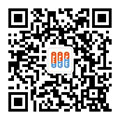What are the test standards for 5G product certification in Japan?
At present, 5G communication technology has been vigorously launched in various countries in the world, and certification requirements have also followed. At present, 3GPP defines the 5G frequency range, which is divided into FR1 (450MHz – 6GHz, also known as Sub-6GHz) and FR2 (24.250GHz – 52.6GHz, also known as Above-6GHz or millimeter wave), let’s take a look at some of Japan’s requirements for 5G product certification:
1. 5G NR (New Radio) Japan Radio Law certification standards:
(1)FR1,Sub-6GHz:
Japan Radio Law test standard: Article 2-1-11-30 (terminal), Article 2-1-11-29 (base station)
● 3.7GHz(n77):3600 MHz -4100MHz
● 4.5GHz(n79):4500 MHz -4900 MHz
● 3.7 GHz band or 4.5 GHz band allocated 100Mhz/1 carrier: There are telecom operators NTT docomo, KDDI including Okinawa cellular Softbank, RAKUTEN Mobile
● The maximum antenna power is limited to 200mW (terminal)
● Japan Telecom Law test standard: Telecom Business Law (terminal)
(2)FR2,Above-6GHz:
Japan Radio Law test standard: Article 2-1-11-32 (terminal), Article 2-1-11-31 (base station)
● 28GHz (n257):27GHz-29.5GHz
● 2.8GHz allocated 400Mhz/1 carrier: NTT docomo,KDDI,Softbank,RAKUTEN Mobile
● The maximum antenna power is limited to 200mW (mobile terminal)
● Japan Telecom Law test standard Telecom Business Law (terminal)
2. The content of the telecommunications law certification test in Japan MIC certification 5G NR is basically similar to that of LTE. The main tests are:
(1)Basic Functions
(2)Transmission Timing
(3)Random Access Control
(4)Time Alignment Control
(5)Location Registration Control
(6)Channel Switching
(7)Receiving Level Reports
(8)Inherent Information
(9)Receiving Level Deterioration
3. Japan MIC certification 5G NR in the Japan Radio Law test content:
(1)Frequency Tolerance
(2)Antenna Power
(3)Antenna Power Tolerance
(4)Antenna Gain
(5)Occupied Bandwidth
(6)Unwanted Emission Strength
(7)Adjacent Channel Leakage Power
(8)Leakage Power at No-carrier Transmission
(9)Intermodulation Characteristics
(10)RX Emission Strength
4. 5G-NR frequency bands planned by major Japanese operators
● Frequency bands used by NTT docomo: Sub 6GHz has n77, n78, n79; Above-6GHz has n257, n260.
● Frequency bands used by Softbank: Sub 6GHz has n77, n78, n79; Above-6GHz has n257.
● Bands used by KDDI: Sub 6GHz has n77, n78, n79; Above-6GHz has n257.
Deeplight carries out Japanese certification all year round, and customers are welcome to consult relevant testing certification at any time.
Recommended items
-

5G mobile phone security and SAR testing
5G mobile phone security and SAR testingView more -

The latest 5G bands recommended by North American mobile operator alliance PTCRB
The division and combination of 5G mobile communication technology is much more complex than 4G. The common large frequency bands are FR1 and FR2, FR1 and FR2 are SA and NSA, NSA is combined with 4G, and the working mode is TDD and FDD, so the confirmation of frequency bands and system is particularly important....View more -

The 5G Sub-6GHz/5G millimeter wave SAR test and 5G CE/FCC SAR test standard
The 5G Sub-6GHz/5G millimeter wave SAR test and 5G CE/FCC SAR test standardView more -

Is the cost of 5G testing too expensive for Deep Light Standard Technology? Five methods to reduce 5G testing costs
It is estimated that billions of 5G devices will be launched in the next few years, and 5G device manufacturers need to deliver high-quality products while overcoming cost constraints. Mobile device OEMs and contract manufacturers responsible for developing mass-produced 5G products have found that the economic environment for production testing is rapidly changing. 5G has added frequency...View more




